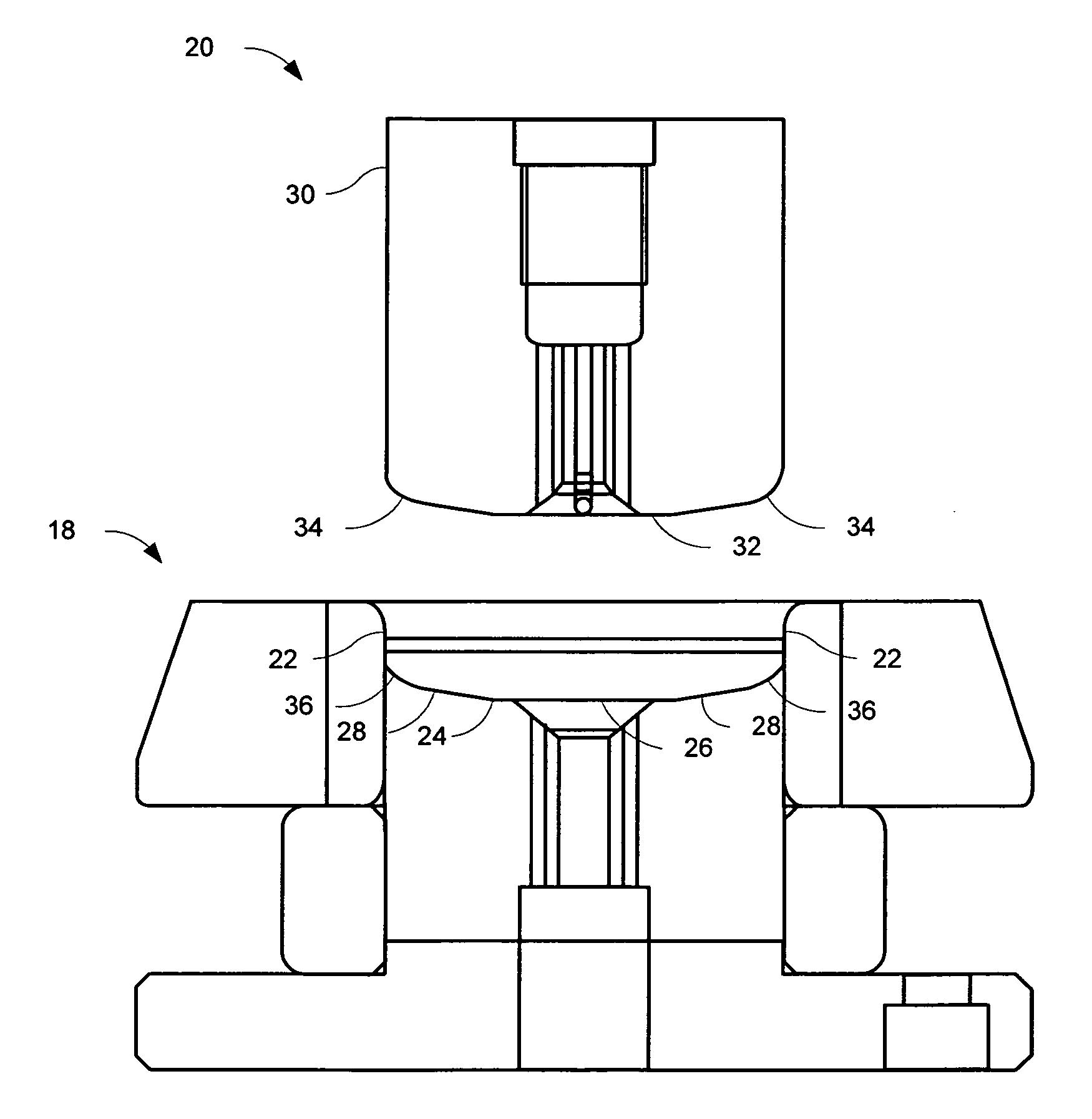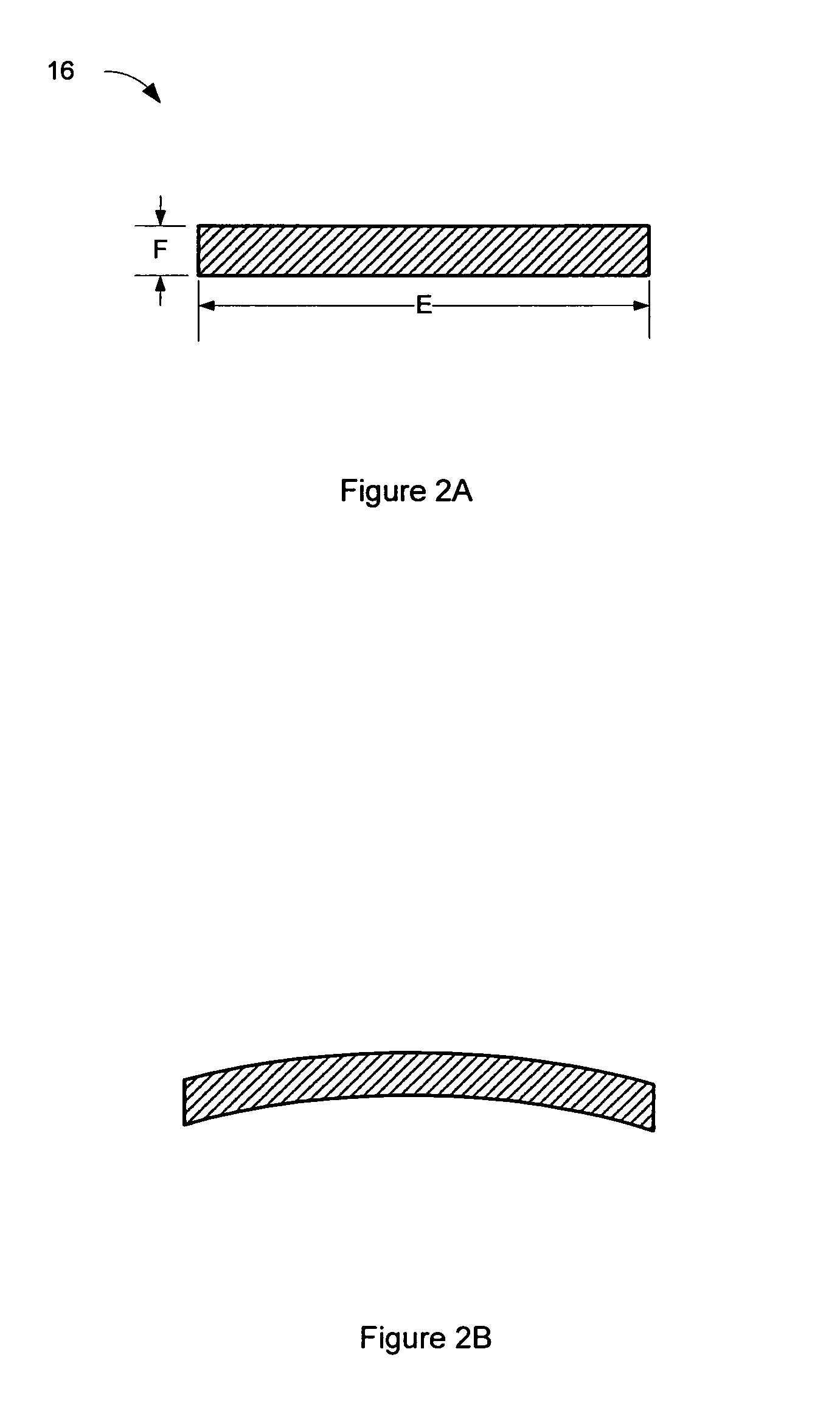Method of making metal containers
a metal container and container body technology, applied in metal-working apparatus, domestic applications, hollow objects, etc., can solve the problems of inability to economically produce metal containers using high-strength alloys, inconvenient storage and handling, and excessive wear and replacement of extrusion tooling, so as to reduce the diameter and wall thickness, increase the height of the container, and reduce the effect of diameter and wall thickness
- Summary
- Abstract
- Description
- Claims
- Application Information
AI Technical Summary
Benefits of technology
Problems solved by technology
Method used
Image
Examples
example
[0051]The following example describes the formation of an extruded, wall ironed and bottom formed cylindrical metal container having a diameter of 65.85 mm and a height of 166.0 mm, in accordance with the present invention. A cup 10 is formed by impact extrusion of disk-shaped metal slug 16 having a diameter E of 77.50 mm and a thickness F of 2.438 mm. The extrusion die 18 is cylindrical, with an interior wall 22 that is 77.85 mm in diameter. The bottom 24 of die 18 has a flat, circular central portion 26 having a diameter of 32 mm, and a conical outer ring 28 with an angle of 1°. The extrusion punch 20 is cylindrical, with an outer surface 30 that is 77.05 mm in diameter. The transition between outer surface 30 and face 32 of the extrusion punch is a curve 34 with a radius of 6.600 mm.
[0052]Metal slug 16 is placed in extrusion die 18 and struck by the extrusion punch with sufficient force to produce cup 10 having a bottom thickness B of 0.600 mm. The resulting cup 10 is cylindrical...
PUM
| Property | Measurement | Unit |
|---|---|---|
| Length | aaaaa | aaaaa |
| Length | aaaaa | aaaaa |
| Length | aaaaa | aaaaa |
Abstract
Description
Claims
Application Information
 Login to View More
Login to View More - R&D
- Intellectual Property
- Life Sciences
- Materials
- Tech Scout
- Unparalleled Data Quality
- Higher Quality Content
- 60% Fewer Hallucinations
Browse by: Latest US Patents, China's latest patents, Technical Efficacy Thesaurus, Application Domain, Technology Topic, Popular Technical Reports.
© 2025 PatSnap. All rights reserved.Legal|Privacy policy|Modern Slavery Act Transparency Statement|Sitemap|About US| Contact US: help@patsnap.com



